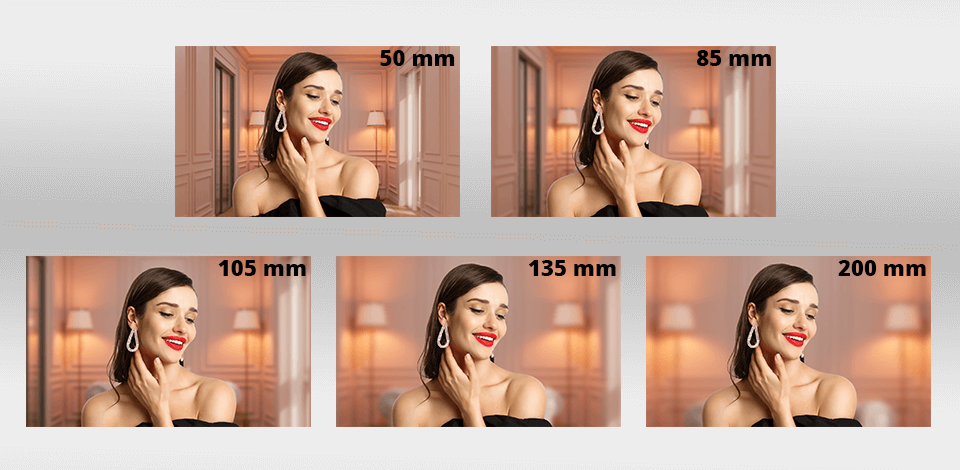
Tetiana and I have had multiple discussions about the best Nikon lens for portraits. We're both Nikon ambassadors – I'm a Nikon D850 user and she's a Nikon Z7 II owner. However, when it comes to our favorite lenses, we have completely opposite tastes.
I’ve always been a fan of the Nikon AF-S FX NIKKOR 85mm f/1.4G and Sigma 105mm f/1.4 DG HSM Art for portraits, but she loves the Nikon AF FX DC-NIKKOR 135mm f/2D, Nikon NIKKOR Z 85mm f/ 1.8 S, and Nikon AF-S FX NIKKOR 50mm f/1.4G. After countless arguments, we finally decided to put the matter to rest.
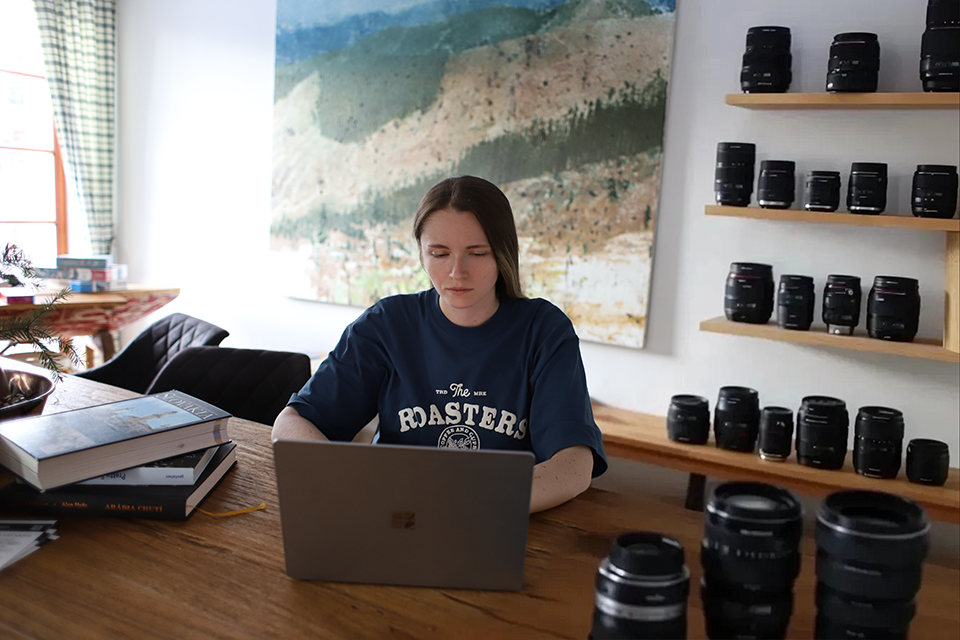
We’ve compiled a list of over 10 lenses for our tests and picked models, based on recommendations from professional photographers who order image editing from the FixThePhoto team, Reddit discussions, and customer feedback on Amazon, Best Buy, and Adorama.
We turned our lens test into a family adventure in the central park. Thus, we could practice lifestyle and take candid portraits of our colleague’s family. Besides, we compared the capabilities of each lens in different lighting situations, including direct sunlight and shaded areas.
Tetiana and I have spent many hours comparing lenses like the 105mm f/1.4E ED, 85mm f/1.8G, and various NIKKOR 50mm models. Based on our findings, we've created a detailed guide to help you choose the best Nikon lens for portrait photography. Choosing among multiple options is easier if you adhere to the following recommendations.
Focal Length: the sweet spot matters. 85mm and 105mm lenses are popular choices among portrait photographers. They are suitable for making a nicely blurred background in pictures.
Aperture: wide open for stunning results. A wide aperture, such as f/1.4 or f/1.8, is ideal for portrait photography. Thus, more light reaches the sensor, so you get a shallow depth of field. Your subject will be properly isolated, while the background is blurred.
For example, during our tests in Central Park, we used the 85mm f/1.8G and received detailed photos with isolated subjects even when shooting at the widest aperture.
Autofocus Performance: don’t miss the moment. When photographing people in motion, a reliable autofocus system is a must-have.
When using the Z 85mm f/1.8 S on her Z7 II, Tetiana experienced almost perfect focus tracking. Older lenses, like the 50mm f/1.4G, often require more manual adjustments.
Bokeh Quality: not all blurs are equal. The beauty and shape of out-of-focus areas are crucial, especially in portraiture. High-end lenses such as the 105mm f/1.4E ED produce creamy, circular bokeh.
Budget-friendly options like the 85mm f/1.8G offer good bokeh for their price point, but they may not quite match the effects of their more expensive counterparts.
Weight and Portability: think about your workflow. The weight of a lens can significantly influence your mobility and comfort, especially during extended shoots. Tetiana preferred lighter 85mm f/1.8G to the heavier 105mm f/1.4E, despite its exceptional image quality. If you're looking for a Nikon portrait lens that won't tire you, while delivering impressive results, the 50mm f/1.8G or Z 50mm f/1.8 S are worth considering.
Compatibility: f-mount vs. z-mount. Deciding between F-mount and Z-mount lenses for your Nikon camera largely depends on whether you're using a DSLR or a mirrorless model. For those who've upgraded to mirrorless cameras like the Z6 II or Z7 II, Z-mount lenses offer superior autofocus and image quality.
If you're still attached to your DSLR cameras, F-mount lenses provide a reliable and cost-effective solution.
Legendary portrait lens with stunning bokeh
Amazon: 100+ sold in the past month
BH: 200+ sold in the past year
Adorama: 50+ sold in the past year
Best Buy: 70+ sold in the past year
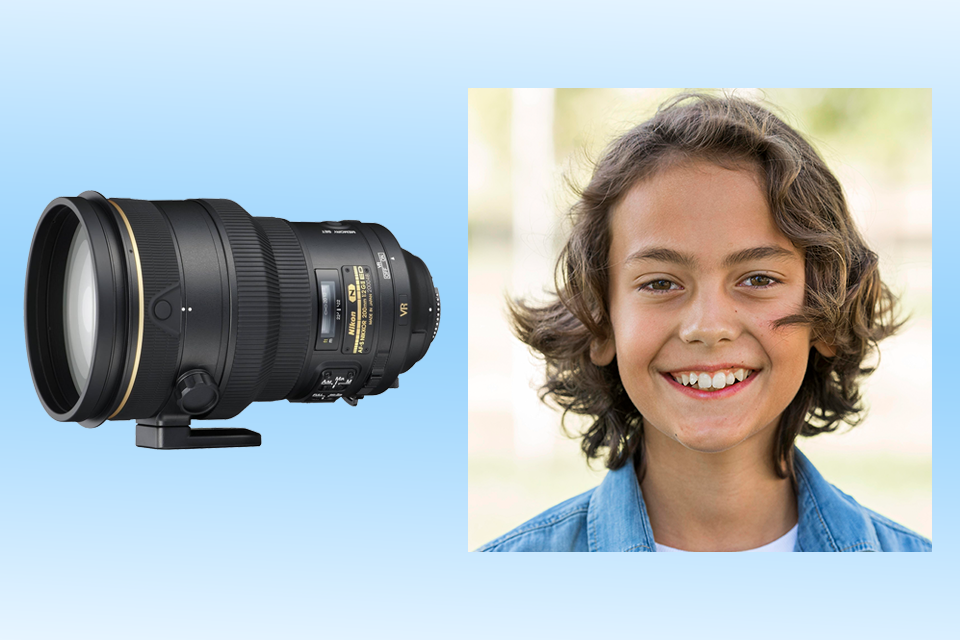
We started our test with the iconic NIKKOR 200mm f/2G ED VR II (view on: Amazon, B&H). This lens creates soft, dreamy backgrounds. The performance was truly impressive. It coped well with separating subjects from their surroundings. The task was rather challenging, given we worked in the chaos of central park.
The optical performance of this lens is nice. If you are professionally into portrait photography, you’ll be pleased with incredible sharpness, even when the aperture is fully opened.
The lighting conditions weren’t the best, but chromatic aberration was barely noticeable. The out-of-focus areas were smooth. In fact, an image acquired a dreamy, almost artistic background. When I photographed Tetiana's son playing in a sun-drenched grove, the background melted into a soft, mesmerizing blur as you can see on the picture above.
Another strong point of this portrait lens from Nikon is autofocus. Even when capturing fast-moving kids, I could rely on its Vibration Reduction and quick focus. Thus, children looked absolutely sharp in photos. I was also impressed by its performance in low-light conditions.
Portraits taken during the golden hour were stunning. The lens accurately captured skin tones. In fact, I didn’t need to apply many changes during editing.
A common complaint among Amazon reviewers was that the lens limited flexibility and made it difficult to get close to subjects. Actually, this wasn’t a surprise considering its large weight and 200mm focal length. During testing, we fully understood those inconveniences.
Due to its long focal length, it can’t be called a universal option. Frankly speaking, you’d better opt for another lens for shooting in crowded spaces or capturing spontaneous moments. However, when it comes to producing beautiful, impactful portraits, for it’s really the best one. Tetiana and I concluded that this lens is a great representative of Nikon portrait telephoto lenses for amateurs.
The bokeh king
Amazon: 200+ bought in the past month
BH: 300+ sold in the past year
Adorama: 60+ sold in the past year
Best Buy: 80+ sold in the past year
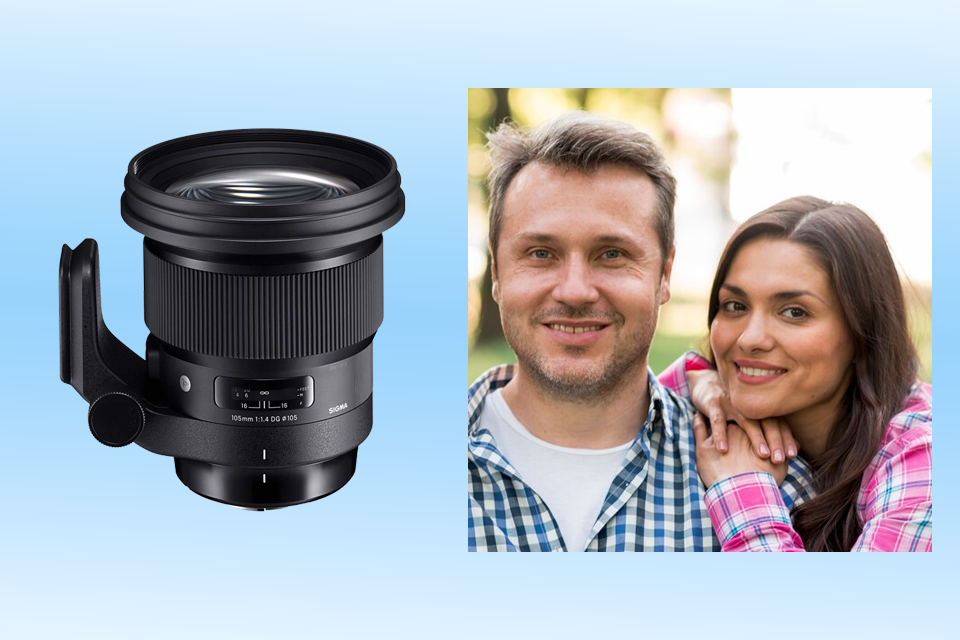
I was counting down the minutes until we arrived at central park to test the Sigma 105mm f/1.4 DG HSM Art lens (view on: Amazon, SIGMA). It is admired for its incredible bokeh and is even called the “Bokeh Master” on Reddit. Still, keep in mind that this is one of the heaviest prime lenses.
An Amazon reviewer described the lens as feeling like a “mini-bazooka” on their camera, but added that they'd happily sacrifice portability for the image quality. I could see the point, but Tetiana claimed the weight was a serious drawback. She joked: “It's a bit too heavy to lug around for hours without a monopod”.
The lens delivered impeccable background separation, regardless of whether we were shooting in the golden hour or on an overcast day. We took a series of photos of our children sitting on park benches with colorful balloons. The lens beautifully blurred the background, creating a soft, dreamy effect. The balloons stood out nicely.
Some people complained about its slower autofocus, but I had no trouble tracking fast-moving subjects with my Nikon D850. However, Tetiana's Nikon Z7 II required a bit more time to lock focus, especially when subjects were moving erratically.
I decided to photograph the gloomy arches of Bethesda Terrace in Central Park. At f/1.4, the lens produced an incredible depth of field. I managed to isolate the subjects. I photographed Tetiana's family as they played toy helicopter together and the lens captured all the intricate details of their outfits. That was amazing, as every stitch and shadow was rendered perfectly.
All in all, I can say that the Sigma lens is a terrific option in terms of image quality. I like the level of detail and the smoothness of the bokeh. Sure, it's a bit of a beast to carry around and the autofocus could be faster. However, it's a fantastic choice for those who prioritize image quality.
Lightweight, compact, and reliable
Amazon: 500+ bought in the past month
BH: 200+ sold in the past year
Adorama: 90+ sold in the past year
Best Buy: 90+ sold in the past year
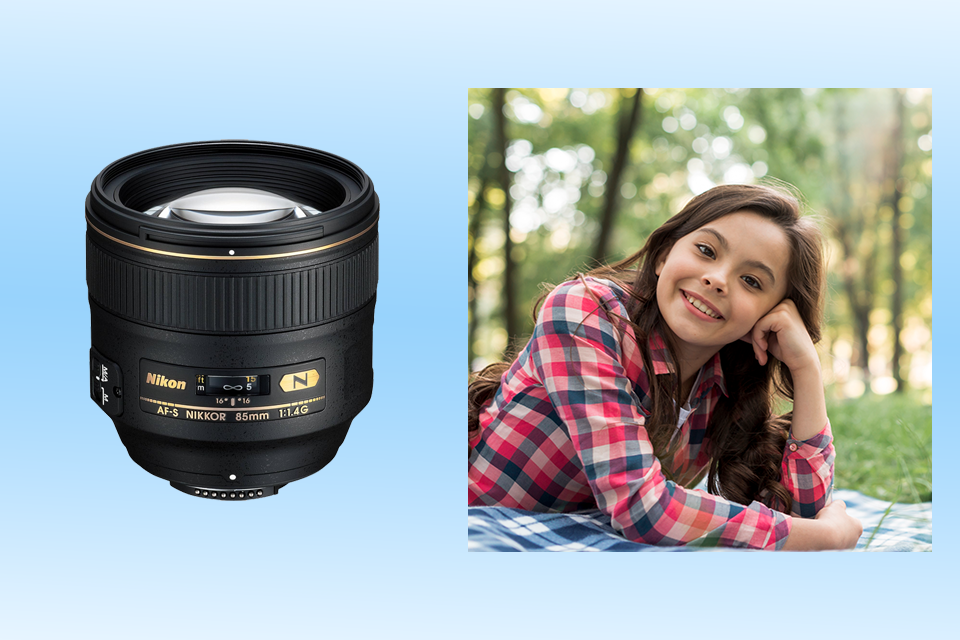
I've heard great things about the NIKKOR 85mm f/1.4G (view on: Amazon, Nikon), so I was excited to test it and see if this NIKKOR portrait lens lived up to the hype. It has a sleek design and solid build quality. Thus, it is a joy to handle, especially for someone like Tetiana who likes to travel light. When I paired it with my Nikon D850, I knew I had found a winning combination.
Thanks to its f/1.4 aperture, this lens created a dreamy, out-of-focus background. I particularly liked the effect when I photographed my smiling daughter. I loved how she was isolated from the busy scene. Tetiana was equally impressed, saying, “The color rendition and skin tones are second to none. This lens is a terrific choice”.
To see whether the AF was sharp and accurate, we found a shady spot in Central Park. The autofocus was incredibly responsive, even when Tetiana’s son was running around. I read one review that said the autofocus wasn't as fast as newer models. I see what that person meant, but it's never been an issue for me when taking family portraits.
The thing that impressed me most about this lens was its rendering. It has a classic, soft look that I love. The subject separation is outstanding.
All in all, Tetiana and I liked the Nikon AF-S 85mm f/1.4G. It is lightweight and delivers exceptional image quality, so I believe this lens is a great Nikon lens for weddings. By using this lens, you will get beautiful skin tones in your photos, so it is a wonderful choice for portraits. Nikon has created a lens that delivers stunning results, with a classic and natural feel.
Lens with character
Amazon: 400+ bought in the past month
BH: 300+ sold in the past year
Adorama: 70+ sold in the past year
Best Buy: 100+ sold in the past year
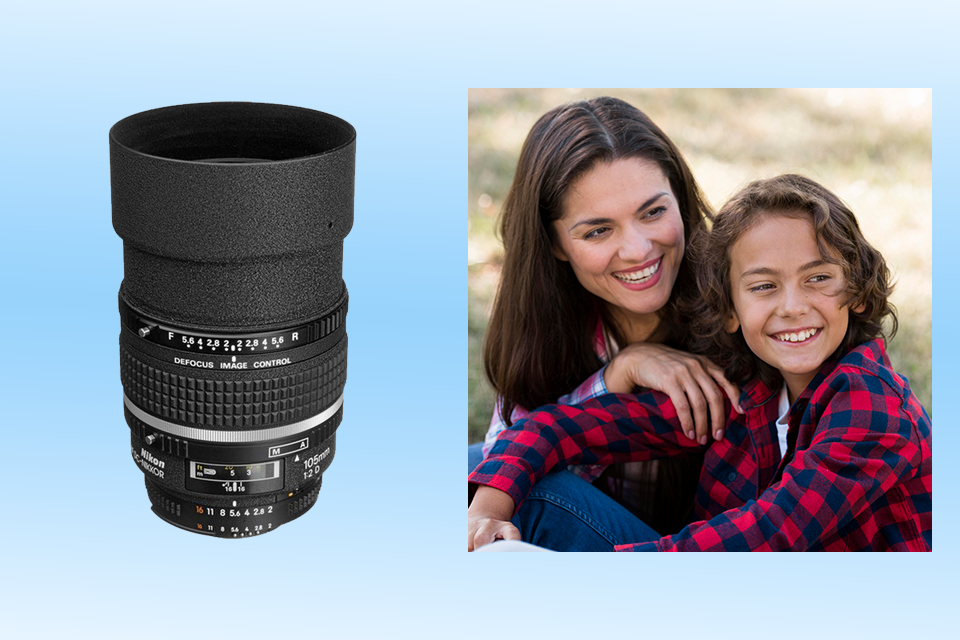
The NIKKOR 135mm f/2D (view on: Amazon, B&H, Nikon) offers a unique feature compared to contemporary lenses - adjustable defocus. This means you can tailor the smoothness of the background blur to your liking.
During our park portrait sessions, this lens remarkably coped with isolating subjects and creating artistic bokeh. I often feel disappointed with modern optics that lack this feature.
I couldn’t but marvel at its classic design and manual focus. Though it isn’t as portable as the Nikon 85mm f/1.4G, it's definitely lighter than the Sigma 105mm. While holding it, I felt like I was using a lens with a rich history, as if it had been passed down from a veteran photographer.
If you want super-agile optics, the 135mm f/2D can hardly be called the best Nikon portrait lens. However, it still got the job done. I had to be very patient when photographing active kids, but the final images were the payoff. I agree with the reviewer who described it as a “lens for deliberate photographers”.
I was pleased by the sharpness at f/2, especially for portraits. This lens beautifully renders skin tones and makes images somehow soft. I agree that Sigma 105mm delivers more clinical sharpness, but the 135mm f/2D provides a more elegant, romantic feel.
Tetiana and I believe this lens for portraits isn't a one-size-fits-all product. It rewards only those who are willing to invest time and effort into mastering its defocus control. In a nutshell, the Nikon 135mm f/2D is a dream come true for photographers who cherish classic imagery and want to add a personal touch to their bokeh.
Modern sharpness with a creative edge
Amazon: 300+ bought in the past month
BH: 100+ sold in the past year
Adorama: 50+ sold in the past year
Best Buy: 90+ sold in the past year
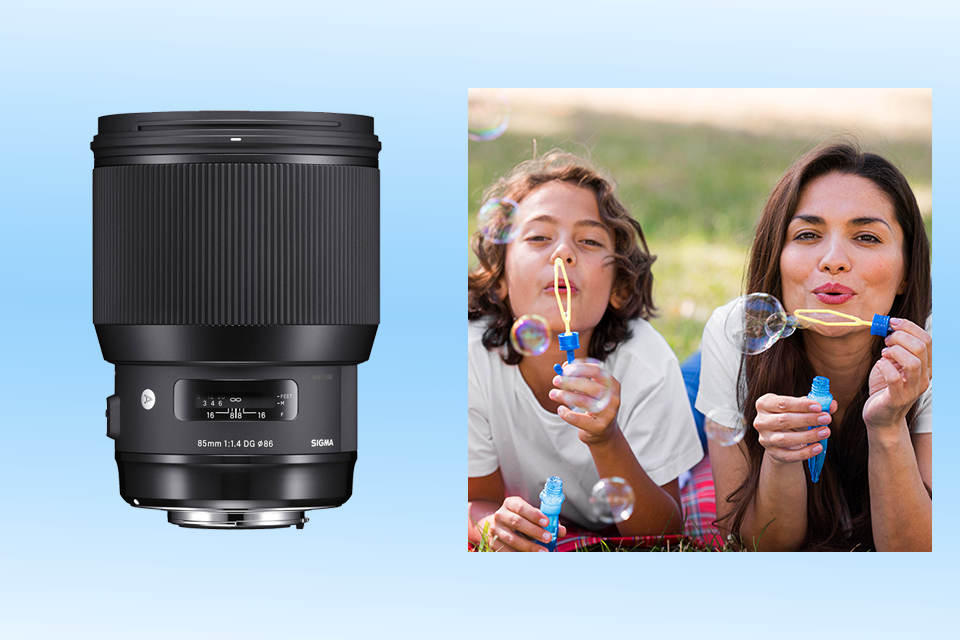
Sigma 85mm f/1.4 DG HSM Art (view on: Amazon, B&H, Sigma) combines crisp details with a luscious, out-of-focus area. The lens has a premium design, but it's worth noting that it's considerably larger than Nikon's 85mm f/1.4G.
I took portraits of my son during the golden hour. The lens perfectly captured his face as you can see above, bathed in the warm, speckled sunlight. The background was artfully blurred. I like that dreamy, ethereal effect. With the wide f/1.4 aperture, I managed to isolate the subject. Besides, the photo turned out very stylish thanks to the high contrast.
The autofocus performance was somewhat variable. On my Nikon D850, it was impressively fast and accurate. Generally, I think it is a solid lens for baby photography. However, when paired with Tetiana's Z7 II, it faced difficulties, focusing in poorly-lit places. So, she had to switch to manual focus.
I was impressed by how this lens captured fine detail, keeping the background nicely blurred. In a portrait of Tetiana and her son playing with soap bubbles, their hair and bubbles were incredibly sharp, and the background was soft and neat. We discovered that this lens is sharper than the classic 85mm Nikon. Still, Tetiana doesn’t like its modern design, stating it is cold and impersonal.
Photographers looking to achieve technical perfection will definitely like this lens. It brags about exceptional sharpness and a modern look. However, it's a bit bulkier than some other options, which is a minor trade-off, considering its ability to focus accurately and blur the background nicely.
Portrait dream lens
Amazon: 300+ bought in the past month
BH: 200+ sold in the past year
Adorama: 60+ sold in the past year
Best Buy: 70+ sold in the past year
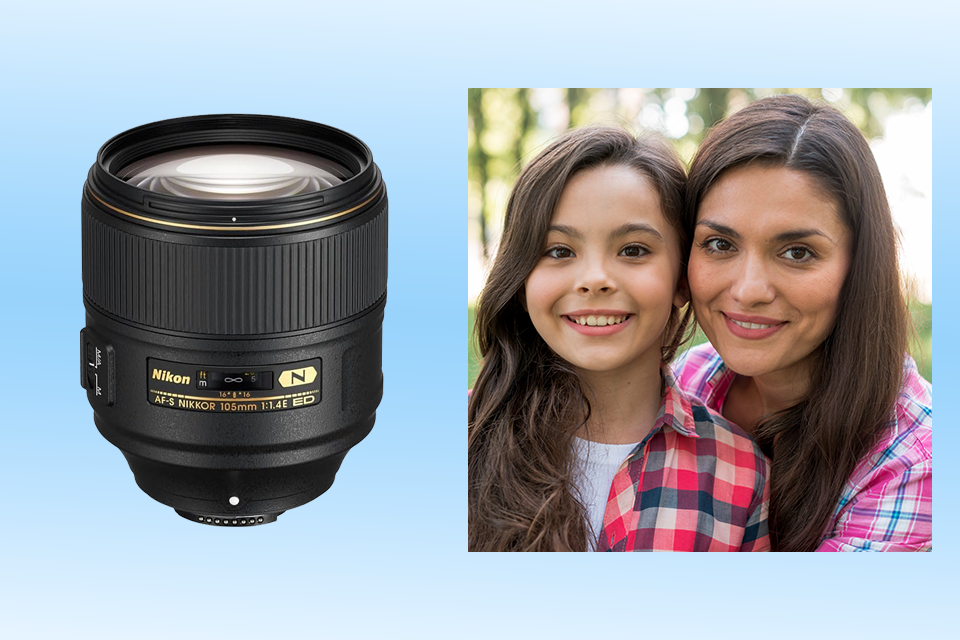
The Nikon 105mm f/1.4E ED (view on: Amazon, B&H, Nikon) lived up to its reputation. I attached it to my Nikon D850 and it produced stunning images with clear subjects, beautiful bokeh, and rich colors. I was immediately hooked and yearned to use it to take bridal portraits.
I was instantly impressed with our first test shots. The photos of our children playing in the sun-kissed fields were breathtaking. This 105mm lens isolated my daughter's curly hair with a gorgeous bokeh effect. Moreover, the autofocus was incredibly fast and accurate, even in challenging lighting conditions. There was virtually no color fringing at all.
Another impressive feature was how this lens rendered highlights. When we took portraits with backlit subjects and fairy lights, we received round bokeh balls in the background. There were no distracting onion ring artifacts.
Tetiana loved the image quality she received with the 105mm lens attached to her Nikon Z7 II. However, she is less optimistic about its weight and narrow field of view because she struggled to photograph active children.
Generally, this portrait lens for Nikon can render skin tones, producing warm, natural, and beautifully balanced results. I photographed my colleague and her daughter on a picnic blanket and received a picture with fine details and a pleasing aesthetic.
I think this is a wonderful lens for taking portraits. You can achieve winsome bokeh, terrific sharpness, and vibrant colors. Still, you have to put up with its large weight.
Perfect balance of sharpness and versatility
Amazon: 300+ bought in the past month
BH: 300+ sold in the past year
Adorama: 70+ sold in the past year
Best Buy: 90+ sold in the past year
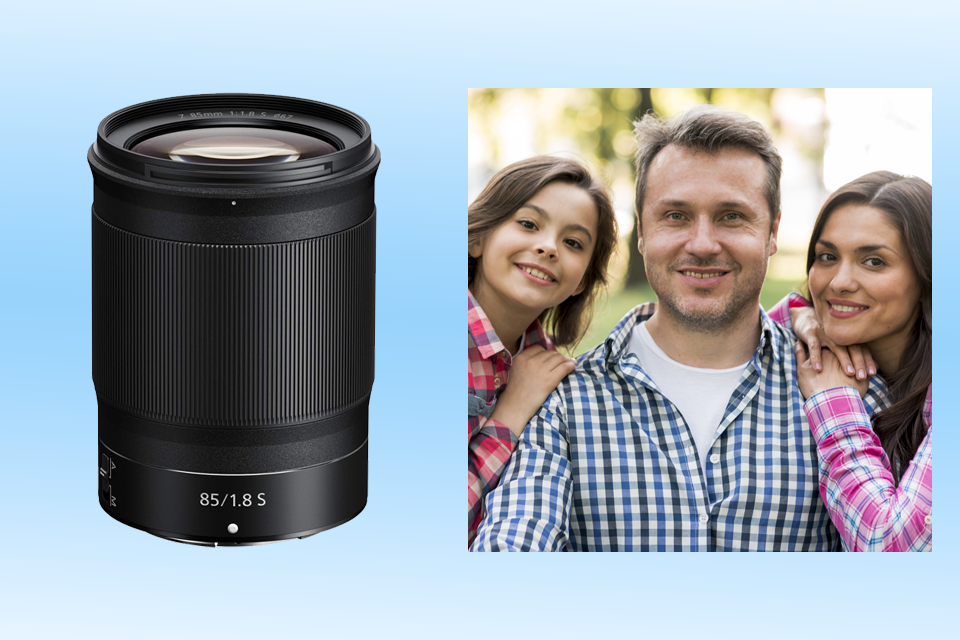
Trying to find the best portrait lens for Nikon, we also tested the Nikon Z 85mm f/1.8 S (view on: Amazon, B&H, Nikon). Tetiana mounted it on her Z7 II and started to take images. It was a fantastic combination. The lens balances speed, image quality, and portability (just 470g), so it can become a perfect companion for unplanned photoshoots.
It is easy to capture both candid family moments and formal portraits. In fact, it can even back up as a lens for wedding photography.
If you want to capture fleeting moments, this lens is an excellent choice. It has a lightning-fast autofocus that tracked Tetiana’s son as he raced through the park's shaded areas. The resulting image was detailed and bright. The subject was in focus and the background appeared to be beautifully blurred.
The level of detail was another selling point of the lens. It captured everything with remarkable clarity at f/1.8, from the finest skin textures to the subtlest nuances in the background. The colors were accurate and pleasing to the eye. There appeared a slightly cool cast that complemented the overall image. Even when shooting wide open, there was no noticeable chromatic aberration.
While testing it on my Nikon Z6, I photographed Tetiana under a tree. The Z 85mm didn’t let me down. It produced a sharp and detailed image with a mesmerizing blurred background. It's a versatile lens that isolates the subject accurately and keeps image quality high.
Tetiana has a special nickname for this lens – “workhorse”. It's a fantastic choice for Nikon Z users seeking a portable, high-performing lens that delivers excellent results without weighing them down.
Classic all-rounder with character
Amazon: 300+ bought in the past month
BH: 200+ sold in the past year
Adorama: 90+ sold in the past year
Best Buy: 100+ sold in the past year
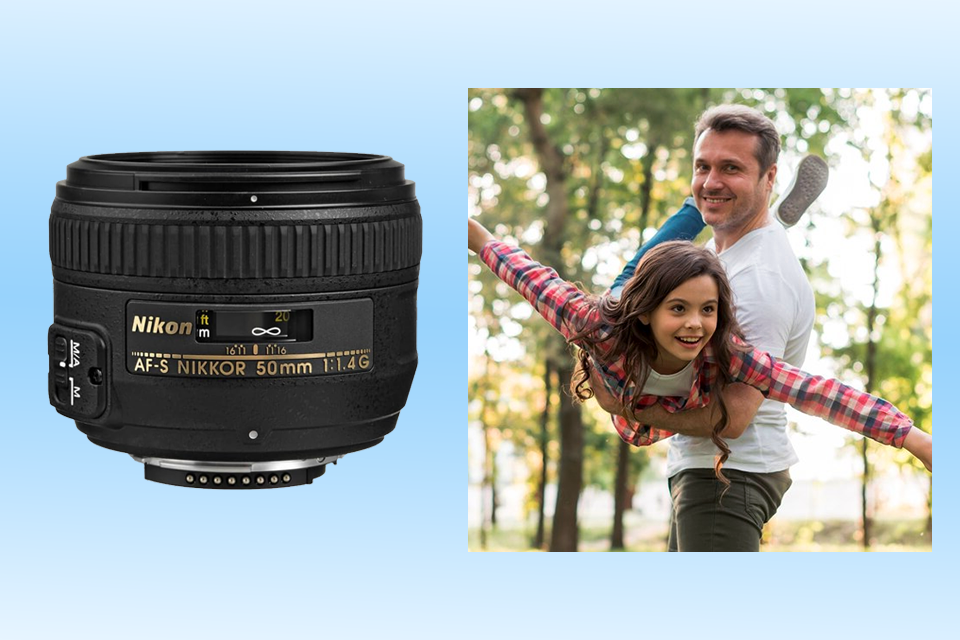
When we were debating about the best Nikon lens for family portraits, Tetiana pulled the NIKKOR 50mm f/1.4G lens (view on: Amazon, B&H, Nikon) from her bag. This is a 50mm lens that is feted for its natural perspective. Many experts claim it is ideal for a heartfelt, storybook-like image. That was something we were after in Central Park.
The creamy bokeh created by this lens when set to f/1.4 is truly stunning. I snapped an impromptu photo of my husband and daughter having fun together with the park in the soft background. This 50mm lens perfectly captured a delicate and dreamlike atmosphere.
The autofocus wasn't as quick as the Z-mount lenses we've tried. It was particularly an issue in dark places when we tried to capture movement, like photographing Tetiana's running son. But the lens is lightweight (only 280g) and easy to carry around. I could quickly switch between capturing candid portraits and wider landscape shots.
At f/1.4, the image center was razor sharp, but the edges softened slightly. Some photographers really prefer this vintage look. There was a slight chromatic aberration when shooting in sunny weather, though we easily fixed the defect by means of headshot retouching. The colors were warm and natural.
To my mind, this lens may not match the cutting-edge performance of newer models. However, it is a dependable choice for photographers who appreciate classics. Using this lens, you can get portraits with a nostalgic feel. Besides, you are going to like an affordable price and lightweight design.
Modern classic for everyday portraits
Amazon: 500+ bought in the past month
BH: 400+ sold in the past year
Adorama: 100+ sold in the past year
Best Buy: 150+ sold in the past year
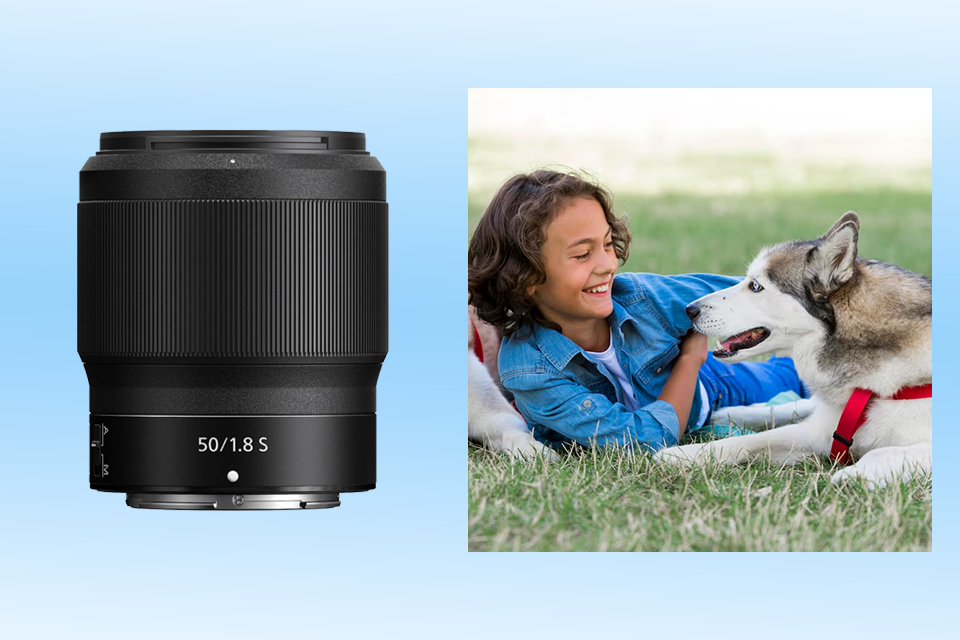
The moment Tetiana attached the NIKKOR Z 50mm f/1.8 S (view on: Amazon, B&H, Nikon) to her Nikon Z7 II, it was clear we were testing a sleek and powerful model. It attracted attention with an elegant profile and superior optics.
This camera for portraits was far beyond an older AF-S 50mm f/1.4G. This beast stood out with stunningly sharp images and lightning-fast autofocus.
We started our photo session at Bethesda Terrace. I had Tetiana’s son lean against the railing. Arches made for the perfect backdrop. I shot wide open at f/1.8 and received very sharp images as you can see on the picture above. The background was all soft and blurry. The bokeh was way smoother than with my old F-mount lens.
I like how quickly and quietly the autofocus snapped into place even in dim lighting. It was very helpful, especially when I was photographing Tetiana’s son actively playing with his gorgeous husky Jim. This Nikon lens for portraits captured the rich hues of their outfits. Moreover, skin tones and fur details looked so lifelike. I couldn't have asked for better results.
I took some photos at sunset. The lens handled backlit subjects amazingly. There were no flares or weird color distortion in the pictures. My old lens wouldn’t be able to produce the same quality results.
This lens is super light - only 415g. Figuratively speaking, you can carry it around all day. I'd love an f/1.4 aperture, but the images I get from this lens are super sharp and the focus is spot on. It's a great everyday portrait lens that's very reliable.
Budget-friendly workhorse
Amazon: 600+ bought in the past month
BH: 400+ sold in the past year
Adorama: 100+ sold in the past year
Best Buy: 200+ sold in the past year

The AF-S NIKKOR 50mm f/1.8G (view on: Amazon, B&H, Nikon) is a budget-friendly lens that belies its price. It is lightweight (only 185g) and compact. So, if you are searching for optics for quick wedding portraits, this one is a terrific choice. It delivers especially amazing results when paired with the Nikon D850 and similar cameras.
I took a photo of Tetiana's son blowing bubbles in the park to see how this lens performed. With the aperture set to f/1.8, the lens produced a beautiful bokeh effect, separating the subject from the background. Still, the transition between the sharp subject and the soft background wasn't as gradual as on the Z-mount version. Anyway, the background blur was very pleasing for the price. The center of the image was exceptionally sharp, but as anticipated, the sharpness decreased slightly towards the edges.
The 50mm f/1.8G lens handled backlit subjects very well. There was some lens flare, but it wasn't overly noticeable. It produced beautiful skin tones, enhancing them with soft, golden light. In comparison to the 50mm f/1.4G, the f/1.8 version focused quicker and with greater precision. So, I believe it is a better choice for capturing fast-moving subjects, such as Tetiana's son chasing bubbles.
In my opinion, this lens is incredibly versatile. You can use it for a wide range of scenarios, including portraits, street scenes, close-up shots of flowers or a café table, etc. Though it may not be as sharp as the newer Z-mount lenses, the AF-S 50mm f/1.8G is a good Nikon lens for portraits for the price.
Affordable portrait powerhouse
Amazon: 700+ bought in the past month
BH: 500+ sold in the past year
Adorama: 300+ sold in the past year
Best Buy: 200+ sold in the past year
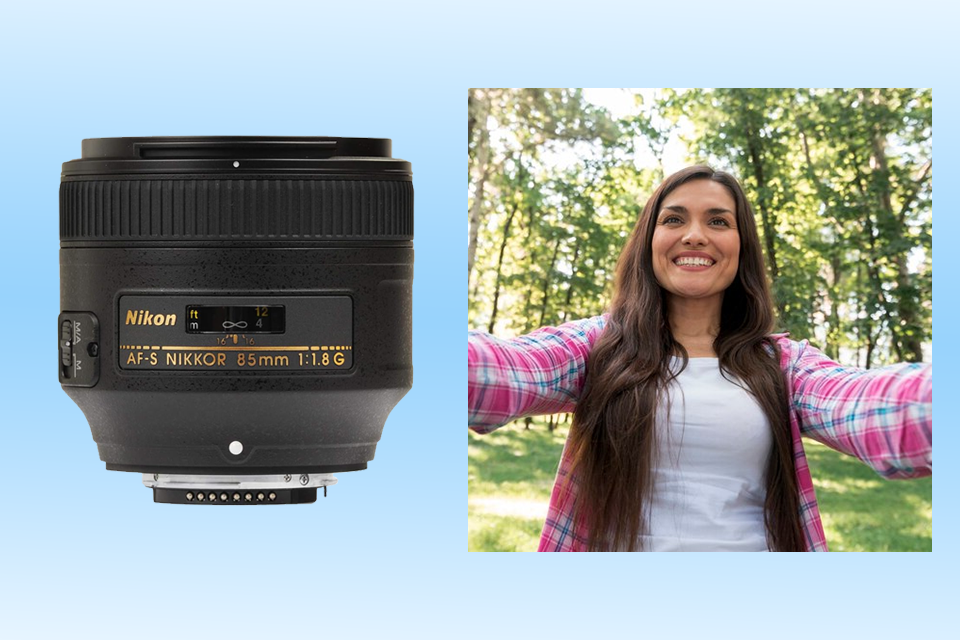
Tetiana chose the AF-S NIKKOR 85mm f/1.8G (view on: Amazon, B&H, Nikon) for this shootout, and I have to admit it was a promising lens. Coupled with her Nikon Z7 II and my D850, it showed amazing results. I didn’t expect such portrait quality from such a low-cost lens.
We took portraits of each other in Central Park as the sun was setting. Tetiana took a shot of me leaning on a wooden bridge. The f/1.8 aperture created a lovely out-of-focus background. The bokeh, while not as creamy as my f/1.4G produced, was still very lovely. I was impressed by how smoothly it rendered the background compared to my older 50mm f/1.8G.
The level of detail was remarkable. We received sharp images, even when photographing wide open. When inspecting my portrait photo, I could clearly see every nuance of my face, including individual strands of hair and the fine texture of my skin. The background trees were beautifully blurred. The autofocus was fast and reliable even in low-light situations.
We both appreciate small weight of this lens, especially when compared to other Nikon portrait lenses. It is likely to please portrait photographers who need a lens they can easily carry all day. Tetiana and I agree that the AF-S 85mm f/1.8G offers exceptional value for its price.
Clients send us images taken with different cameras, including Nikon photo cameras. We accept RAW image files, meticulously examining every detail to create masterpieces from average shots. To provide our clients with an unbiased guide on the top Nikon lenses, we've tested lots of products, including several top-tier portrait lenses rented from K&M Rentals.
To create a comprehensive lens testing setup, we've gathered more than 10 lenses. We consulted professional photographers who use our FixThePhoto editing services to discover their go-to lenses. In addition, we've researched Reddit forums and customer reviews on e-commerce sites.
To give you the most accurate lens reviews, our FixThePhoto team tested each lens in real-world conditions. Tetiana and I spent a day in Central Park, shooting at Bow Bridge, Bethesda Terrace, and the Mall. We experimented with various lighting conditions. For instance, we started shooting at soft morning light, and continued during dramatic golden hour and in the shaded corners.
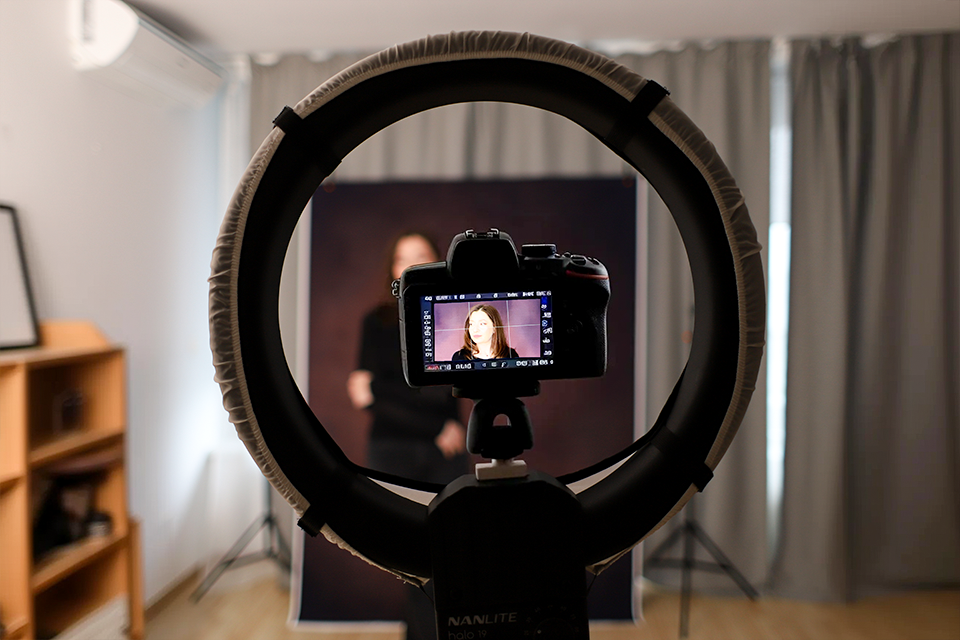
Primarily, we wanted to assess sharpness and bokeh delivered by lenses. We mounted the 85mm f/1.8G and 105mm f/1.4E options on a tripod and took photos. Then we repeated the process but without a tripod and evaluated how lenses isolated subjects and blurred backgrounds. The 105mm lens delivered a winsome bokeh, but the compact and sharp 85mm lens was unmatched in terms of portability.
We also tested AF meticulously. Tetiana photographed moving subjects, namely, couples and children and we assessed the focus tracking and speed. The Z 85mm f/1.8 S lens stood out, demonstrating exceptional autofocus performance on the Z7 II. The accuracy of focusing was particularly noticeable when compared to older DSLR lenses, e.g., the 50mm f/1.4G that required manual tweaking.
To round out our testing, we assessed the comfort and convenience of each Nikon lens. Weight and portability are crucial factors for extended shooting, so we took note of how each lens felt after a full day's use. The 85mm f/1.8G lens was our favorite. It amazed us with excellent image quality, value, and ease of use.
Generally, lens testing was a very rewarding and interesting experience. We have picked the best options and described them in this review.